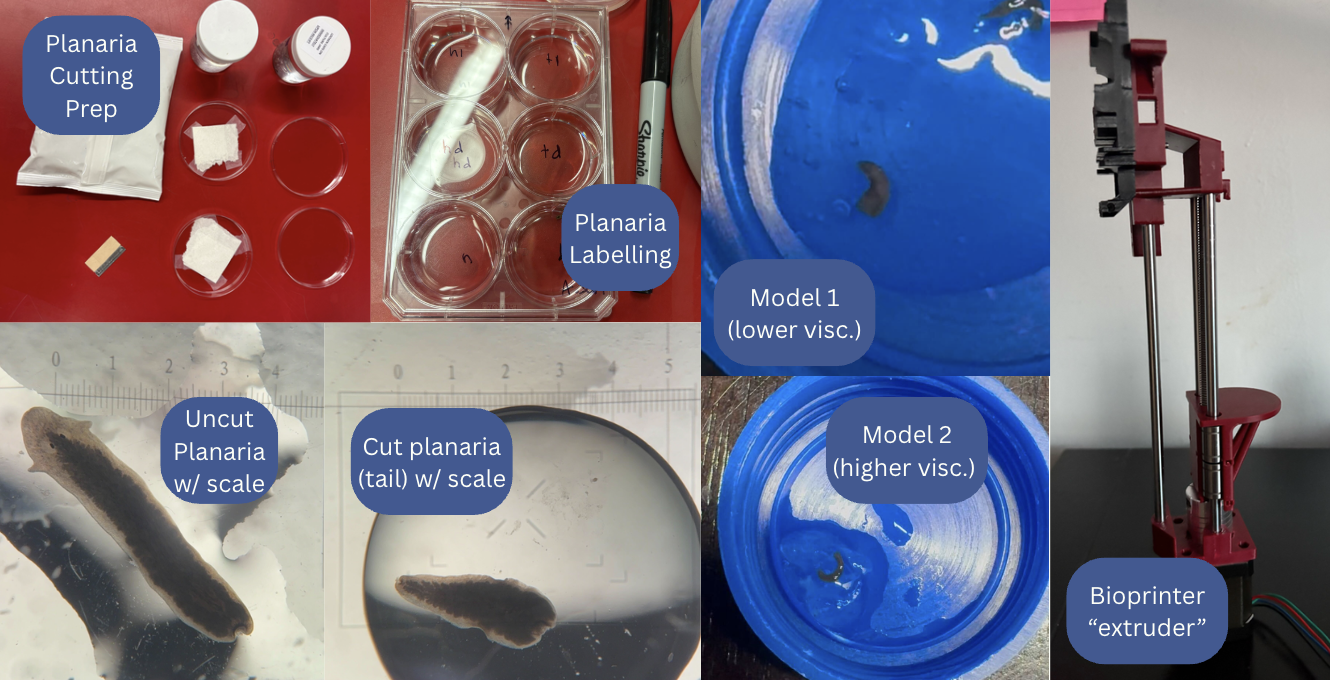
Using Neoblast Proliferation in Bioprinted Scaffolds as a Model for Metastasis
Research is not done on a whim. Throughout the course of this project, I documented the steps I took to narrow down and learn more about my topic of interest, as well as the implementation of the project. This page serves as an online repository for my independent research project. To learn more, scroll through my grant proposal draft and project notes!
Gallery

Project Notes
Acknowledgements
They say it takes a village to raise a child, and for the past six months, this project has been my baby. I would like to extend my heartfelt gratitude to my village, without whom this project would not have come to fruition. Firstly, my project advisor, Dr. Kevin Crowthers, for the guidance provided throughout this project. I would also like to thank my fellow planaria student researchers, Sharvi Pujari and Lilian Amer, for their invaluable assistance in handling and managing the planaria in the lab. I am deeply grateful to my fellow researcher, Ila Chakravarthy, for sharing their lab expertise and assisting in planaria-related procedures. A special thank you to Rob Schnittker from the Stowers Institute for sharing his invaluable insight and regarding planaria cultivation and maintenance. To Manisha Rajaghatta and Jason DesMarais from FIRST Robotics Competition (FRC) Team 1100, I offer my utmost thanks for their continued mentorship, support (emotional and academic), and expertise in 3D printing, biomedical engineering, and project presentation. I extend my gratitude to Dan Strickland from FRC 1100 for his assistance in modifying parts. Lastly, I would like to thank Colleen Shaver and Dee Wilhelm from FRC 190 for their assistance in the rapid acquisition of integral parts. This research was made possible through the resources provided by the Stowers Institute for Medical Research, FRC 1100’s workshop, and the Massachusetts Academy of Math and Science at WPI.